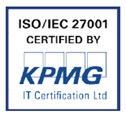Pitfalls of Work Safety
8 October 2018
Authors: Ina Rautiainen and Jussi Talvitie
A “safety first” attitude is, thankfully, embraced in the majority of workplaces. Yet, when something goes wrong, the extent of an employer’s obligations to exercise due care may come as a surprise even for the most diligent employer.
In practice, the sole exception to the scope of necessary measures and duty of care expected of an employer is the unusual and unforeseeable nature of an occupational accident. The sequence of events leading up to the occupational accident must have been out of the employer’s control even if due care has been exercised.
In order to determine the measures and care necessary, employers must consider the circumstances related to the work, working conditions, and any other aspects of the working environment as well as the employees’ personal capacities. This may sound simple enough, but it can prove to be tricky in practice if the policies and practices of the employer are tested in court. How can you prove that all possible aspects of work safety have been carefully considered, and, at the same time, that the circumstances leading to the accident at hand were completely unforeseeable?
The clearest example of an unforeseeable occupational accident would be a complex and unusual chain of events. The occupational accident would be the result of a complex and unusual sequence of events where an employee has broken the rules and instructions in multiple different ways and at multiple different stages of the process. Each of the mistakes and mishaps would have to be a prerequisite for the accident in order for the accident to be deemed unforeseeable and, as such, out of the employer’s control.
An employer’s sphere of control extends to their employees’ actions as well, at least to some extent. Even though the law recognises an employee as the best expert of their own work, in case law, courts have found that employers cannot solely rely on the competence of their employees in matters of safety. Sufficient training and instructions will not do the trick without appropriate supervision. The standard of necessary supervision is a delicate balance between practicality and the sufficient duty of care of an employer – hiring babysitters for each employee is clearly not the answer. When worst comes to worst and the precautions taken by an employer are reviewed in court, the employer must be able to demonstrate that sufficient safety protocols and policies have been put in place and supervised in a credible manner. Near-miss situations must always be promptly analysed and appropriately addressed, because after a near miss, an accident can hardly be deemed unforeseeable anymore.
An employer and its management are responsible for ensuring that comprehensive occupational safety and health practices are implemented, complied with, and supervised within the organisation. However, the sufficient measures and standard of care are usually assessed from the point of view of the manager or director overseeing the employee who has caused or suffered from an occupational accident. Was the accident foreseeable to the manager or director and was the accident’s prevention within their sphere of control?
If said manager or director of the employer is found guilty of a violation of occupational safety, the employer company usually also faces sanctions in the form of corporate fines and entries to the criminal records (which may even lead to exclusion from public tenders). Yet, despite prosecutors attempting to heave the amounts of corporate fines as high as possible, the most notable issue with occupational safety related crimes lies with the potential associated PR risk.
It is important to note that if a crime against occupational health and safety has taken place but the guilty party cannot be identified, the employer company can still be charged in lieu of the anonymous perpetrator.
In light of the above, it may sound tempting to write all-encompassing safety encyclopaedias to protect your company and managers against legal action. But would employees embrace and obey such detailed instructions and would an employer be able to fulfil their duties of supervision of every single little instruction? And is it even possible to anticipate the nearly unforeseeable? Detailed instructions also bear a risk of certain processes being disproportionately emphasised. The prosecutor could argue that merely mentioning something in the instructions does not constitute sufficient instructions, especially if everything else has been regulated in detail.
In the end, the motive for workplace safety related instructions and supervision is ensuring safety and health of employees, not preparing for possible court proceedings. In practice, however, the accurate documentation of safety protocols and sufficient supervision of processes is the only way to demonstrate a sufficient standard of care of the safety and health of employees.





